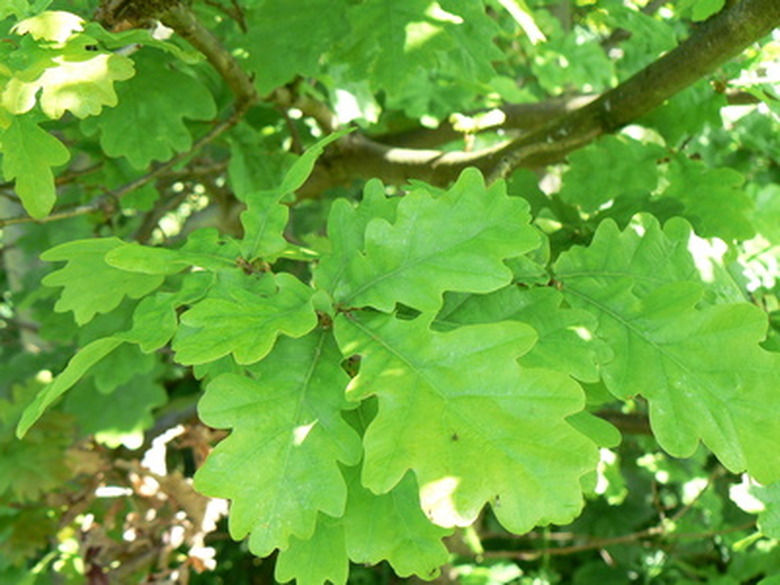Insect Infestation In Pin Oak Trees
Pin oak (Quercus palustris) grows throughout the eastern and midwestern United States in swampy marshlands and along streams. It is used as an ornamental shade tree in yards, parking lots and along highway medians. The tree grows 50 to 75 feet high and has a symmetrical pyramid shape. It produces green, glossy leaves that turn red or bronze in the fall. The tree is prey to many insects, but is rarely severely harmed, according to the U.S. Forest Service.
Identification
Proper insect identification is important before applying a treatment. Consult a field books or a local county extension office prior to treating a pin oak for insect infestation, since insect populations vary depending on the region.
- Pin oak (Quercus palustris) grows throughout the eastern and midwestern United States in swampy marshlands and along streams.
- The tree is prey to many insects, but is rarely severely harmed, according to the U.S. Forest Service.
Effects
Many insect infestations, such as galls, may cause cosmetic damage without injuring the tree. Galls are bumps or growths on leaves and twigs. According to University of Delaware Extension, pin oaks are most impacted by horned galls–2-inch diameter growths with spiky protrusions–caused by a tiny wasp.
Lacebugs suck the juices out of leaves, causing them to turn dusty gray. Leaf miners leave brown areas on leaves. Other insects, though can cause serious damage. Aphids cause distorted growth and gypsy moths quickly eat foliage and stems. Boring insects kill young or stressed trees by eating through the wood of the pin oak.
- Many insect infestations, such as galls, may cause cosmetic damage without injuring the tree.
- Aphids cause distorted growth and gypsy moths quickly eat foliage and stems.
Treatment
Minor infestations can be left untreated. As insects move on, healthy pin oak trees usually recover quickly. Predatory insects living in mature trees often destroy aphid populations before any treatment is necessary. Severe insect infestations should be treated by spraying trees with a horticultural oil spray. Additionally, insect larva, such as twig pruners, live in the debris found on the ground. Removing twigs and leaves of infected trees promptly prevents re-infestation.
Prevention
Healthy trees are less likely to be attacked by boring insects. Pin oak trees need moist, acid soils and leaves will turn yellow when grown in alkaline or lime soils. Pin oaks grow wild along stream beds and are not drought tolerant. Regular watering in dry climates will keep them healthy, along with yearly fertilizing.
- Minor infestations can be left untreated.
- Healthy trees are less likely to be attacked by boring insects.
Considerations
The benefits of spraying trees with an insecticide or horticultural oil must be weighed against the possible negative effects, including killing beneficial insects and polluting groundwater, according to the Forest Service. Sprays should be used on cloudless, windless days, following package directions carefully.
